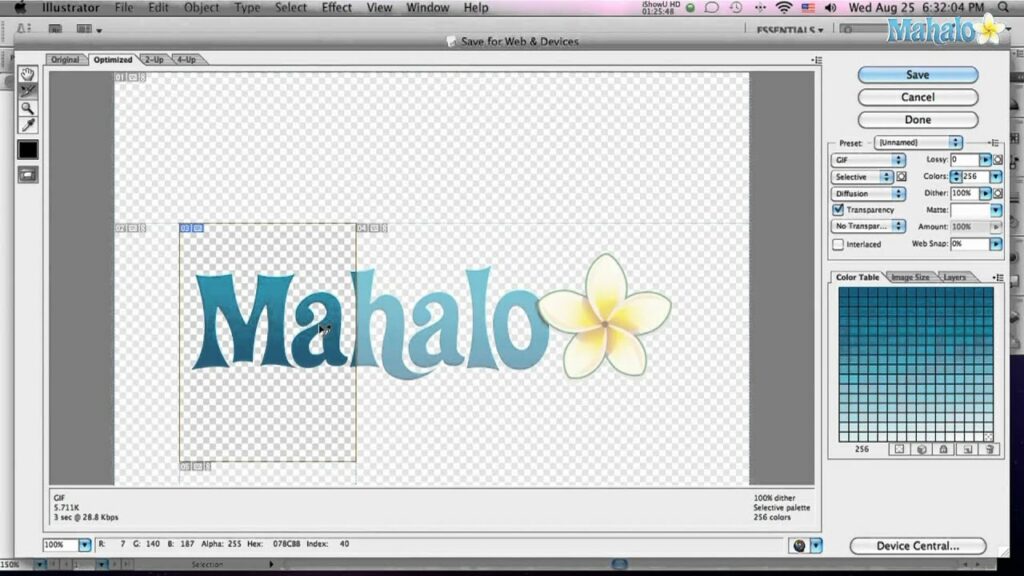Precision Crafting: A Comprehensive Guide to Mastering the Slice Tool in Adobe Illustrator

Introduction:
In the expansive realm of digital design, Adobe Illustrator stands as a cornerstone, offering an extensive toolkit to empower artists and designers to bring their creative visions to life with precision and finesse. Among its arsenal of capabilities, the slice tool emerges as a dynamic feature, providing users with the ability to precisely divide and export artwork into individual segments. Whether you’re a seasoned illustrator, a graphic designer, or an aspiring artist, understanding how to effectively utilize the slice tool in Adobe Illustrator is essential for unlocking new dimensions of creativity. In this comprehensive guide, we’ll embark on a journey to explore the techniques and tools needed to harness the power of the slice tool for seamless workflow and efficient design execution.
Chapter 1: Introducing the Slice Tool
At its core, the slice tool in Adobe Illustrator is a versatile instrument that allows users to divide artwork into separate segments or sections for export or optimization. By defining boundaries and creating slices, users can isolate specific areas of artwork and export them individually, streamlining the design process and optimizing workflow. Whether you’re preparing assets for web design, slicing images for user interface elements, or exporting graphics for print, the slice tool offers unparalleled flexibility and precision.
Chapter 2: Understanding Slicing Techniques
Before diving into advanced techniques, it’s important to understand the basic principles of slicing artwork in Adobe Illustrator. Start by selecting the slice tool from the toolbar or by pressing the keyboard shortcut Shift + K. Then, click and drag to draw a slice around the area of artwork you want to isolate. Use the selection tool to adjust the position and size of the slice as needed. Once you’ve defined your slices, use the slice options panel to customize settings such as slice type, format, and export options.
Chapter 3: Slicing for Web Design
For users designing web graphics or interfaces in Adobe Illustrator, the slice tool is an invaluable asset for optimizing workflow and streamlining asset export. Use the slice tool to divide your layout into individual elements such as buttons, icons, and images. Define slices for each element and customize settings such as format, quality, and optimization options. Use the export for screens feature to export your slices as separate files or use the save for web option to export optimized images for web use.
Chapter 4: Slicing for User Interface Design
In addition to web design, the slice tool in Adobe Illustrator is also well-suited for slicing and exporting assets for user interface design. Whether you’re designing mobile apps, desktop applications, or interactive prototypes, the slice tool offers precise control over exporting individual interface elements. Use the slice tool to isolate buttons, icons, and UI components, and customize export settings such as format, size, and resolution. Use the export options to export assets in formats such as PNG, SVG, or PDF for use in your design workflow.
Chapter 5: Slicing for Print Design
While the slice tool is often associated with web and digital design, it can also be a valuable tool for print designers working in Adobe Illustrator. Whether you’re creating flyers, brochures, or posters, the slice tool can help streamline the process of exporting artwork for print production. Use the slice tool to isolate individual elements such as images, logos, and text blocks, and customize export settings such as format, resolution, and color mode. Use the export options to export assets in formats such as PDF, EPS, or TIFF for use in print production.
Chapter 6: Advanced Slicing Techniques
For users looking to take their slicing skills to the next level, Adobe Illustrator offers a variety of advanced techniques and features to explore. Experiment with using the slice selection tool to select and edit existing slices, allowing for precise adjustments and refinements. Use the slice options panel to customize settings such as slice type, format, and export options on a per-slice basis. Experiment with using the slice tool in conjunction with other Illustrator tools and features, such as masks, layers, and effects, to create complex and dynamic compositions.
Chapter 7: Integrating Slices into Your Workflow
Once you’ve created and customized your slices in Adobe Illustrator, it’s important to integrate them into your design workflow effectively. Use the layers panel to organize and manage the elements of your artwork, including slices, objects, and layers. Experiment with combining slices with other Illustrator tools and techniques, such as masks, clipping paths, and transparency, to create dynamic and interactive designs. Consider using artboards to create multiple variations of your design, each with its own set of slices and export settings.
Chapter 8: Saving and Exporting Slices
Once you’re satisfied with your sliced artwork in Adobe Illustrator, it’s important to save and export your slices for sharing or distribution. Use the save for web option to export optimized images for web use, or use the export for screens feature to export slices as separate files. Customize export settings such as format, quality, and optimization options to ensure the best possible results. Consider using asset management tools or plugins to automate the export process and streamline your workflow.
Conclusion:
Mastering the slice tool in Adobe Illustrator is a journey of exploration and experimentation, offering endless possibilities for streamlining workflow and optimizing design output. By understanding the basic principles, exploring slicing techniques for web, user interface, and print design, mastering advanced techniques, integrating slices into your workflow, and mastering the art of saving and exporting slices, you’ll be able to unlock new dimensions of efficiency and precision in your design workflow. So grab your stylus, set your sights on the canvas, and let the slice tool in Adobe Illustrator become your trusted ally for crafting precision-crafted designs that leave a lasting impression.




